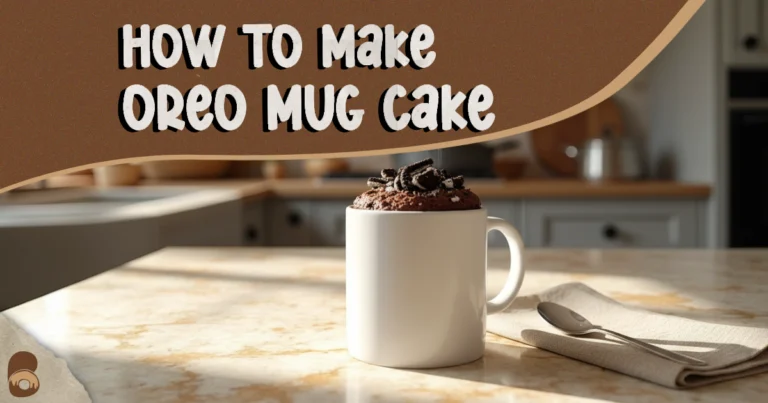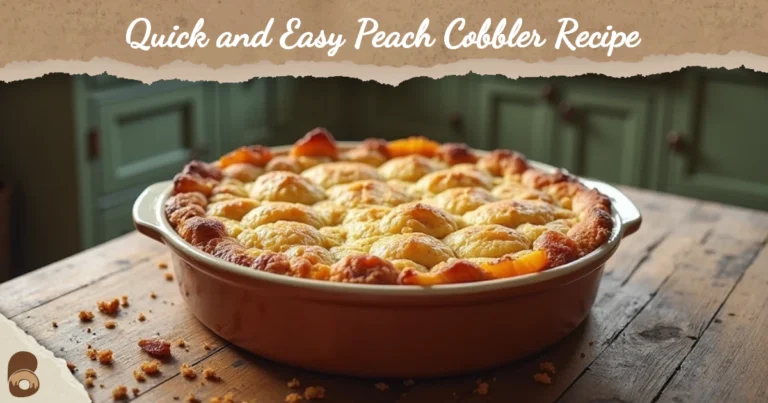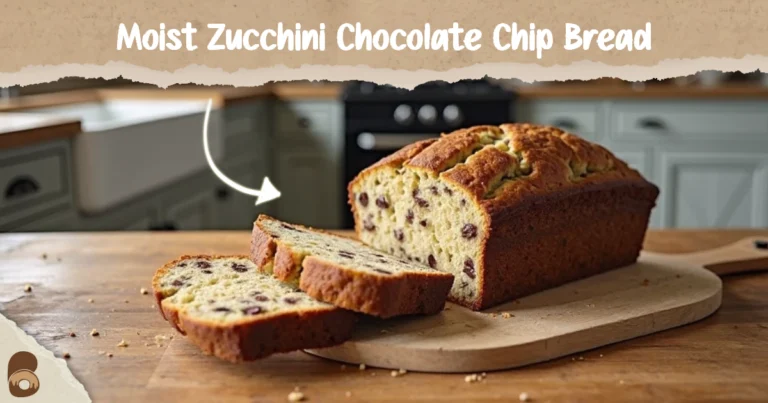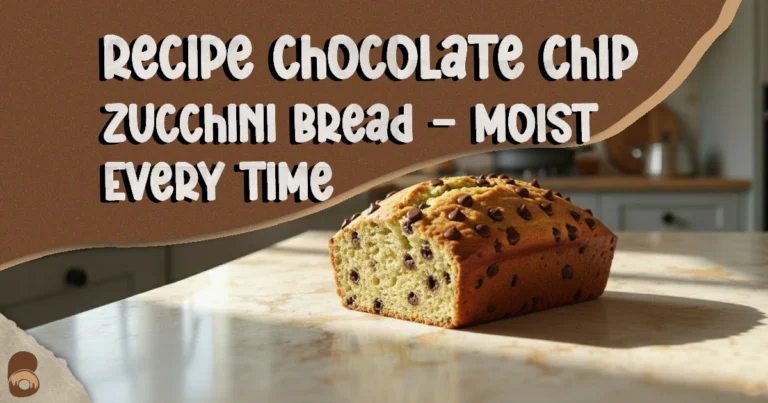Effortless Einkorn Flour Bread: A Rustic Loaf That Feels Like Home
Table of Contents
Table of Contents
Have you ever pulled a loaf from the oven, only to watch it collapse before your eyes? Maybe the inside turned out gummy, or the flavor leaned more toward sour disappointment than warm comfort. If that sounds familiar, you’re not alone. Many home bakers struggle with ancient grains like einkorn because they behave differently from modern wheat.
But here’s the reassuring truth: you can bake a rustic, flavorful, and reliable einkorn flour bread that feels like it came straight from a countryside hearth. Once you understand its quirks and make a few simple adjustments, this loaf becomes one of the most rewarding breads you’ll ever bake.
Why Bake with Einkorn Flour?
Einkorn is more than just flour—it’s a story baked into every grain.
- Ancient heritage: Einkorn is one of the oldest cultivated grains, dating back over 10,000 years.
- Flavor profile: Nutty, slightly sweet, and rich in golden pigments.
- Digestibility: Einkorn’s gluten is less developed than modern wheat, which makes the dough behave differently and can feel gentler for some bakers. Still, it does contain gluten and isn’t safe for those with celiac disease.
- Nutrition edge: Whole grain einkorn is naturally rich in protein, iron, and carotenoids compared to many modern wheat varieties.
💡 If you’d like to see how einkorn compares to spelt, teff, or even coconut flour, check out The Ultimate Guide to Unique Types of Flour for Creative Baking for a bigger picture of how different flours transform your baking.
Recipe Overview
- Yield: 1 medium rustic loaf (8–10 slices)
- Prep time: 25 minutes (active)
- Resting/fermenting time: 5–6 hours
- Bake time: 40–45 minutes
- Total time: 6–7 hours
- Difficulty: Moderate (beginner-friendly with clear steps)
Equipment You’ll Need
- Mixing bowl (large)
- Bench scraper or silicone spatula
- Banneton (proofing basket) or a well-floured bowl
- Clean kitchen towel or plastic wrap
- Dutch oven or lidded cast-iron pot
- Digital kitchen scale (recommended for accuracy)
- Thermometer (to check internal bread temperature)
Ingredients & Measurements (One Rustic Loaf)
| Ingredient | US Cups/Oz | Grams | Notes |
|---|---|---|---|
| Einkorn flour | 4 cups (16 oz) | 455 g | Whole grain or all-purpose einkorn both work |
| Warm water (95°F / 35°C) | 1 ½ cups (12 oz) | 340 g | Slightly warm, not hot |
| Active einkorn sourdough starter | ½ cup (4 oz) | 115 g | Fed 6–8 hours before use |
| Sea salt | 2 tsp (0.3 oz) | 8 g | Enhances flavor |
| Honey or maple syrup (optional) | 1 tbsp (0.5 oz) | 15 g | Adds sweetness and helps browning |
| Olive oil (optional) | 1 tbsp (0.5 oz) | 15 g | Softer crumb |
Step-by-Step Method (With Times & Visual Cues)
✅ Use this checklist as your roadmap:
- Feed your starter
- Refresh your sourdough starter einkorn 6–8 hours before baking.
- Visual cue: Look for an airy dough that has roughly doubled in size and shows strength by floating when tested in water.
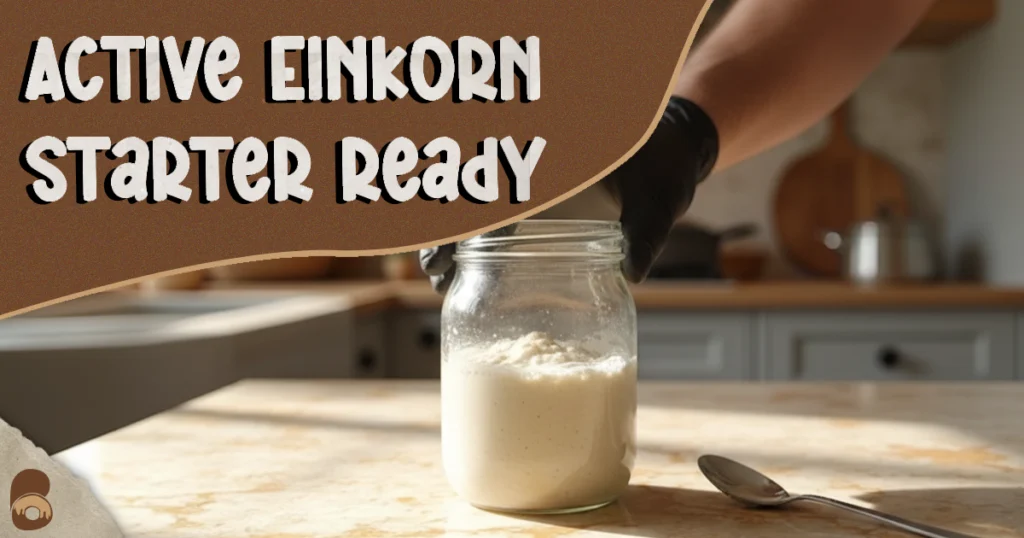
- Mix the dough (autolyse)
- In a large bowl, combine flour, water, starter, and honey. Mix until no dry spots remain.
- Rest 30 minutes.
- Visual cue: Dough should look shaggy but hydrated.
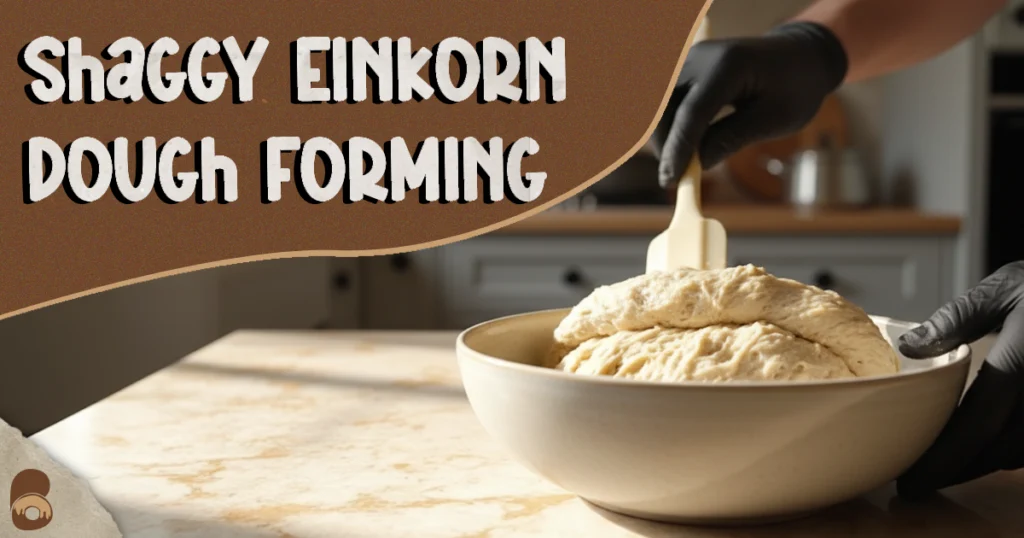
- Add salt and oil
- Sprinkle salt and drizzle oil (if using). Gently fold into dough.
- Visual cue: Dough becomes smoother, slightly stretchy.
- Bulk fermentation (first rise)
- Let the dough rest, covered, for 3–4 hours at around 75°F (24°C), giving it a light fold halfway through to build strength.
- Visual cue: Dough should puff up by about 30–40%, not double.

- Shape the loaf
- Lightly flour hands, gently shape into a round or oval. Place in a floured banneton.
- Visual cue: Surface feels taut but not tearing.
- Final rise (proofing)
- Rest 60–90 minutes, covered.
- Visual cue: Dough holds shape, feels airy when poked, springs back slowly.
- Bake
- Preheat the Dutch oven at 450°F (230°C). Transfer the dough inside.
- Bake 20 minutes covered, then 20–25 minutes uncovered.
- Safety note: Always handle the Dutch oven with thick oven mitts, as it holds onto very high heat even after leaving the oven.
- Cool before slicing
- Rest the loaf on a wire rack for at least 1 hour.
- Visual cue: Crust crackles slightly as it cools.
Troubleshooting & Fixes for Einkorn Flour Bread
- Dense texture → Hydration too low. Add 1–2 tbsp more water next time.
- Flat loaf → Likely over-proofed. Shorten the rise by 30–45 minutes.
- Sticky dough → Normal for einkorn. Wet your hands or use a scraper instead of adding flour.
- Too sour → Starter overripe. Feed it closer to your mixing time.
- Undercooked center → Always check internal temp: bread should reach 200–205°F (93–96°C).
Science Bite: Why Einkorn Dough Behaves Differently
Einkorn isn’t difficult—it’s just different. Here’s why:
- Weaker gluten bonds: Einkorn gluten doesn’t form strong elastic strands, so dough spreads more.
- Pigments & oils: These create its golden color and nutty flavor, but also make the dough feel stickier.
- Water absorption: Einkorn absorbs less water, so dough benefits from slightly lower hydration (65–70%).
- Fermentation speed: Sugars in einkorn feed sourdough cultures quickly, so rises are shorter.
Think of it as an ancient grain that responds better to patience and a gentler touch.
Ingredient Swaps & Dietary Notes
- Gluten-sensitive bakers: Einkorn is not gluten-free but may be easier to tolerate for some individuals. It is unsafe for celiac disease.
- Egg-free: No eggs needed—this recipe is naturally vegan.
- Dairy-free: Uses only water and oil; swap olive oil with butter if you prefer richness.
- Sweetener swaps: Use maple syrup, agave, or omit for a more savory loaf.
Storage & Make-Ahead Tips
- Room temp: Store in a paper bag inside a bread box for 2–3 days (shorter in humid climates).
- Freezer-friendly: Slice, wrap tightly, and freeze for best quality up to 2–3 months (safe up to 6 months). Reheat by toasting straight from frozen.
- Make-ahead starter: Feed your sourdough starter the night before so it’s ready by morning.
- Meal prep idea: Bake two loaves, freeze one for stress-free bread on busy weeks.
Visual Cues for Doneness
- Crust: Deep golden-brown, slightly blistered surface.
- Sound: Hollow when tapped on the bottom.
- Aroma: Nutty, with a gentle sweetness filling the kitchen.
- Texture: Firm exterior, springy interior.
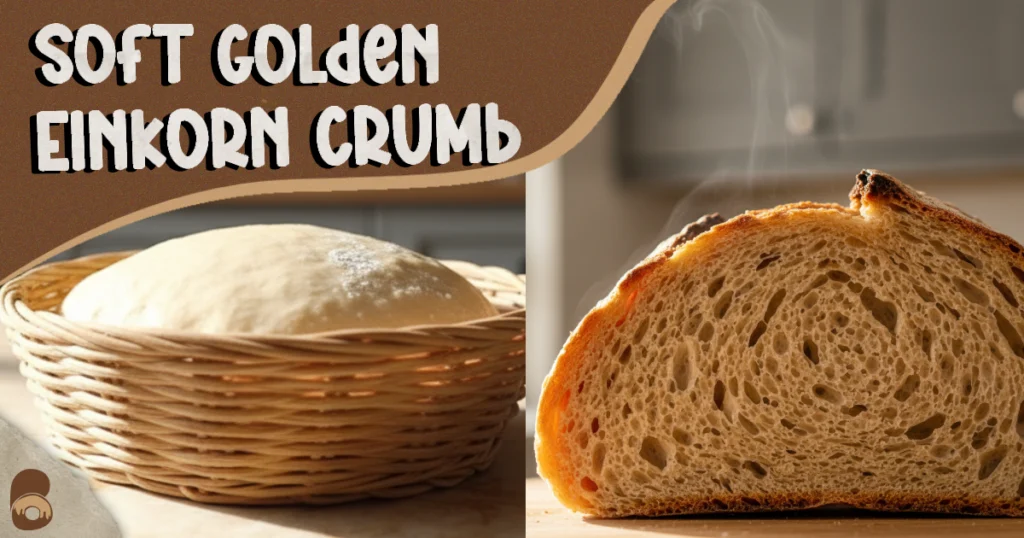
FAQs About Einkorn Flour Bread
Q1: Can I make einkorn flour bread without a sourdough starter?
Yes, you can use yeast instead. Add 2 teaspoons (7 g) of instant yeast and shorten the bulk rise to just 1–2 hours before shaping.
Q2: Why is my einkorn sourdough loaf always flat?
Einkorn gluten is weaker. Use a proofing basket for support and shorten the final rise.
Q3: Can I mix einkorn with other flours in bread recipes?
Definitely. A 50:50 mix of einkorn and bread flour gives more lift without losing flavor.
Q4: What’s the best hydration for einkorn flour bread?
Aim for about 65–70% hydration. Higher amounts can cause the loaf to spread or collapse.
Q5: Is einkorn flour bread healthier than modern wheat bread?
Yes, whole-grain einkorn flour provides more protein, antioxidants, and certain minerals compared to refined modern wheat flour.
Final Thoughts
Baking with einkorn isn’t about achieving the perfect Instagram loaf—it’s about enjoying the warmth of a heritage grain and the satisfaction of a rustic bread that nourishes your home. Once you learn the flow of einkorn flour bread, it becomes a recipe you’ll naturally come back to often.
👉 Follow me on Pinterest for more easy, reliable baking recipes.
Simple, honest recipes — perfect results every time.
Share your experience and help others!
Tried this recipe? Leave a rating and make someone’s day tastier
Be the first to rate this recipe and help others discover it!


